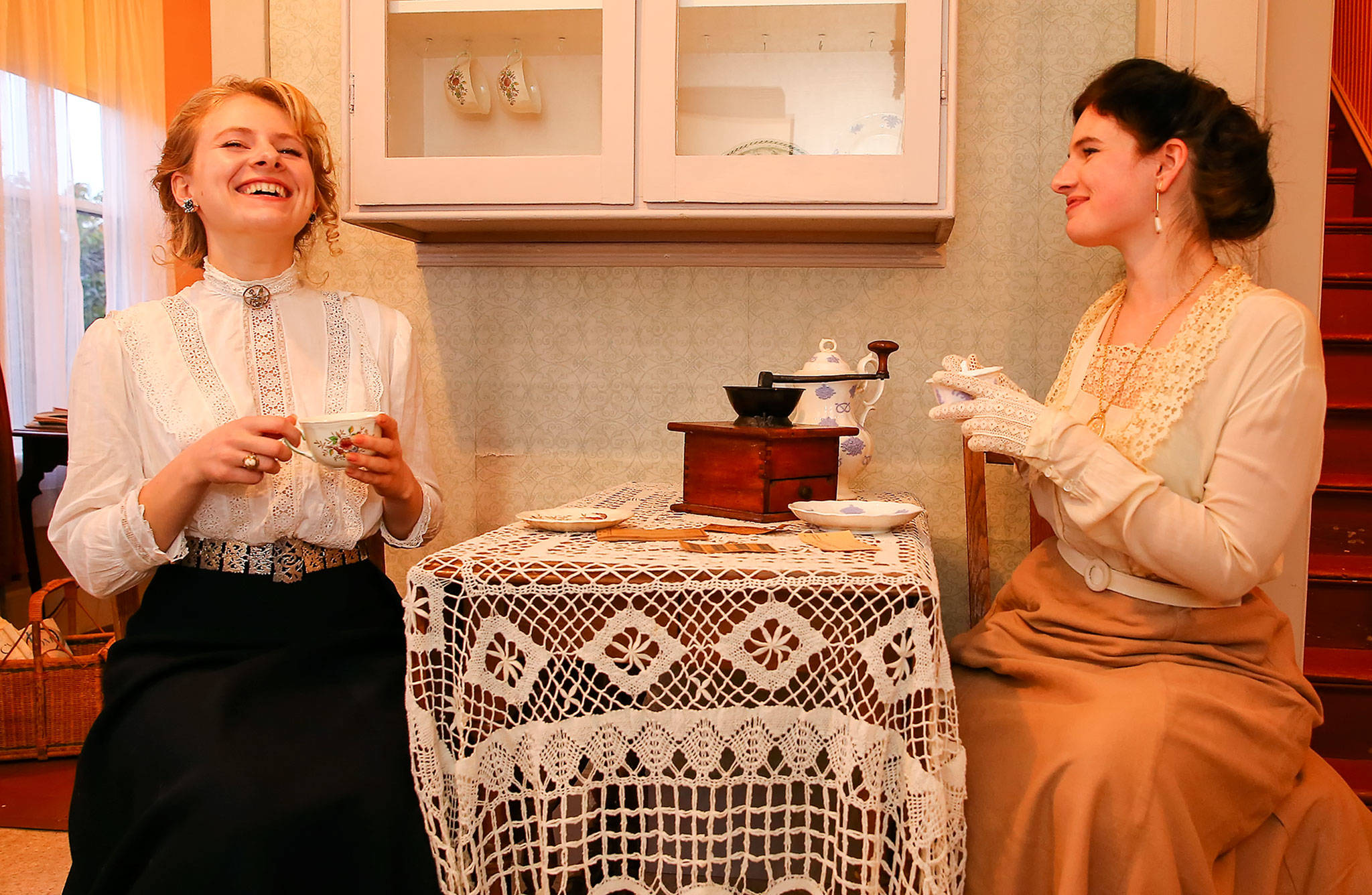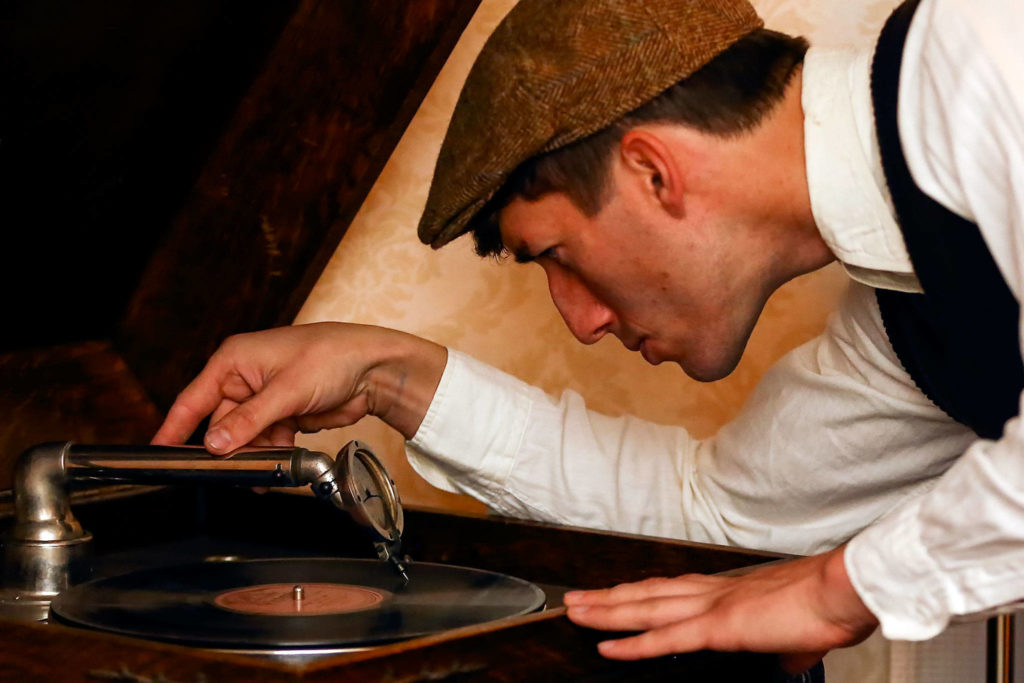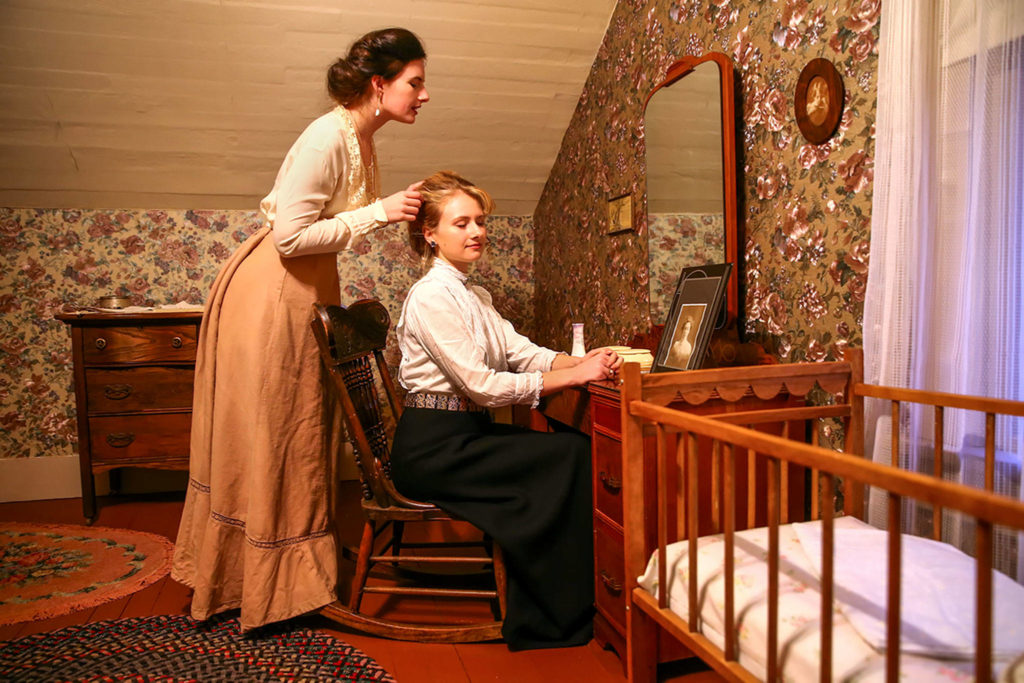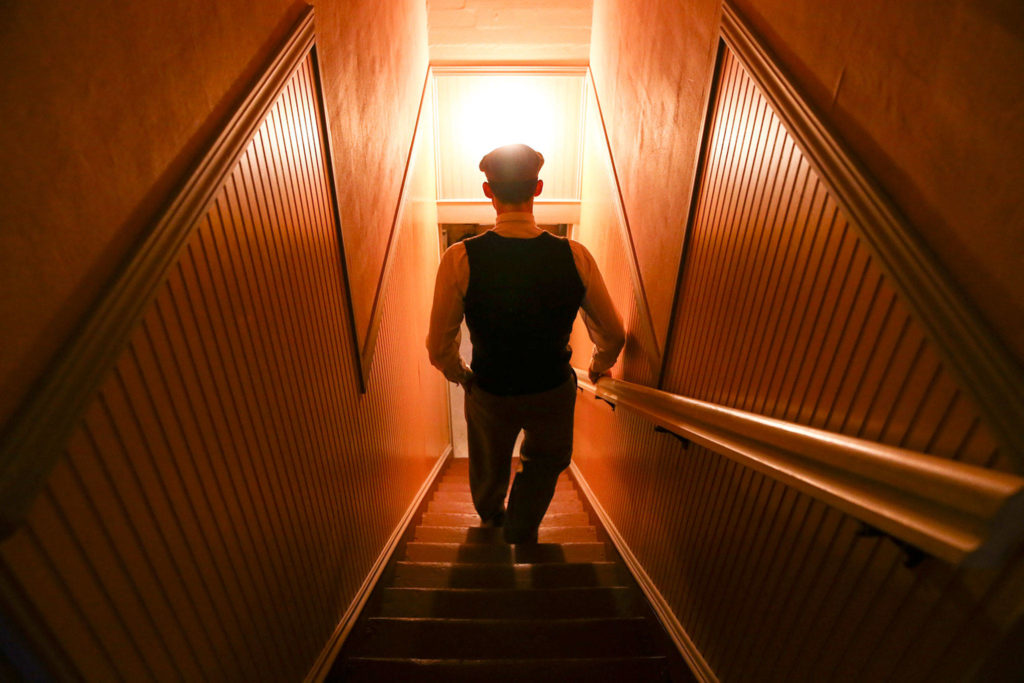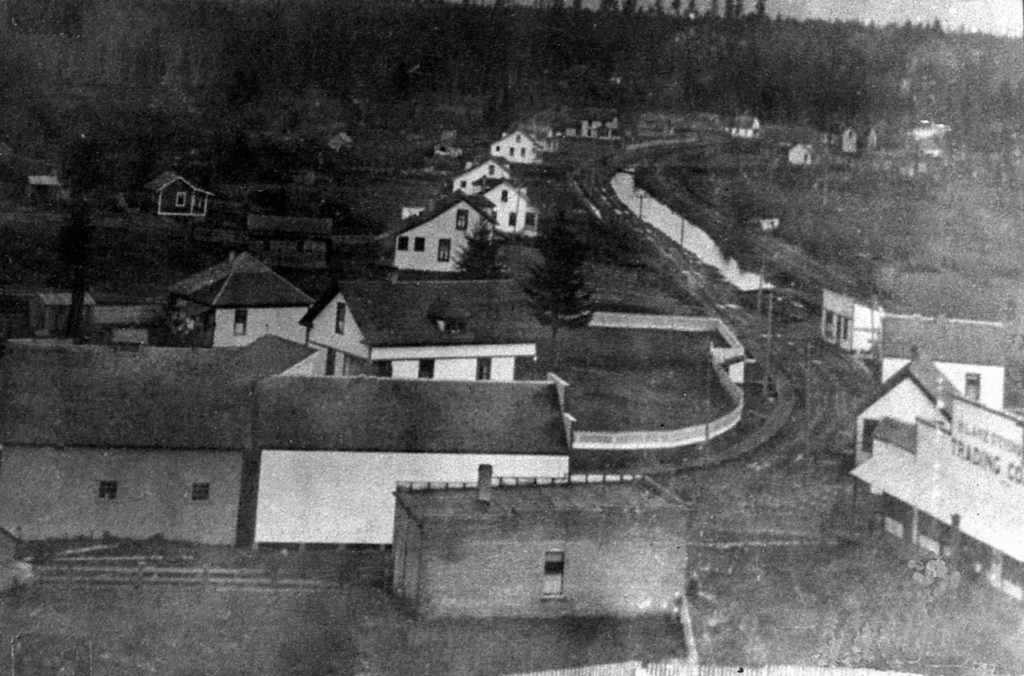Paul Grimm didn’t travel all the way from New York to Washington to sleep in a tent.
The German-born millwright came on a promise of permanent housing from his employers, the Rucker Brothers Mill Co., who needed help building a sawmill on the shore of Lake Stevens.
The house, built in 1903, stood on a knoll at what’s now 20th Street NE and 123rd Avenue NE, and was within walking distance of the mill. It was no mansion, but the two-story home was spacious and comfortable for Paul and Bertha Grimm and their five children, who lived there from 1904 to 1968.
After the deaths of its original inhabitants, the Grimm House — as it later became known — gradually fell into disrepair. If it weren’t for two former mayors and the Lake Stevens Historical Society, who restored the house to its original state, it might have been lost for good.
In 1995, the Grimm House was added to the National Register of Historic Places. A year later, it was picked up and moved next to the Lake Stevens Historical Museum on 124th Avenue NE.
These days, the Grimm House is open for tours Fridays and Saturdays. Visitors can step back in time and see the house as it was in the early days.
Since the house is one of the few remaining physical links to the suburban city’s history, the Lake Stevens Historical Society has furnished it with interesting artifacts collected over the years, including a claw-foot bathtub, antique wood stove and phonograph.
“I’m so thankful we had people back then who saw the value of it and preserved it,” said Anita Kroeze, the historical society’s president. “It’s important to know where you came from, how things began. It’s the spirit of the community.”
Edmundo Olanu, 32, grew up in Lake Stevens during the Grimm House’s restoration in the late 1990s and early 2000s. It wasn’t until he spent time at the house as a volunteer that he fully understood the building’s significance.
“You’d think it was abandoned when you were a kid, but it was actually a remnant from Lake Stevens’ history,” said Olanu, a historical society member. “You could say this about any historical place, and I’m obviously a little biased, but I feel like it is its own experience. It almost feels like you live there when you walk through it.”
For special events, Olanu dons period clothing from the early 1900s with his girlfriend, Emerald Adams, 26, of Sultan, and her sister, Autumn Adams, 23, of Sultan. They explained that visiting the Grimm House is like looking into a window into the past.
The Grimm House story begins 15 years before it was built. In 1888, entrepreneurial brothers Wyatt and Bethel Rucker moved to the Puget Sound area from Ohio. They made thousands of land transactions in the Everett and Lake Stevens areas in the following years, hoping to profit from the expansion of railroads in the region.
By about 1900, the Ruckers were invested in logging, farming, milling, banking, transportation and real estate. They saw potential in Lake Stevens because it was located just 10 miles from Everett and only 1 mile from a major railroad, and was on the doorstep of a seemingly limitless supply of timber.
While logging operations could get by with small transient crews, mills required permanent housing, schools and shops for workers and their families. The four-bedroom, one-bath Grimm House was one of four houses built to support mid-level management personnel.
Historical society president Kroeze, 74, of Lake Stevens, said the Rucker brothers tried to be good to their employees.
“The thinking was, ‘If you treat these people well, they’re going to do good work for you,’” she said.
Paul Grimm arrived in the early 1900s, followed later by his wife, Bertha, who traveled by train with their two sons, Paul and Max. In Lake Stevens, Bertha gave birth to three other children: Dorothy in 1904, Orrin in 1905 and Robert in 1918.
Grimm, a millwright superintendent and master mechanic, helped build Rucker Mill around 1907. He was one of about 300 employees at the mill, which processed 75,000 to 100,000 board-feet of old-growth timber per day.
In 1917, the Rucker Mill burned down. Grimm testified in court on behalf of the Rucker brothers, and received a pay raise for his ability to recall and state for the record all the equipment lost in the fire. The mill was rebuilt.
In 1926, the mill was destroyed by fire again, and this time it closed for good. Grimm became a carpenter. He was 71 when he died in 1947.
After Bertha Grimm died in 1968, Bill Hawkins purchased the house. He was Lake Stevens’ first mayor after the city incorporated in 1960.
In 1988, Hawkins donated the building to the historical society rather than tear it down. By then, neglect and weather had taken a toll on the house. But Gayle Whitsell, the society’s president at the time, saw an opportunity to preserve Lake Stevens’ early days.
“He wanted to restore a piece of history that was going to be bulldozed over,” said Cyndi Whitsell-Fraser, Whitsell’s daughter and the historical society’s treasurer. “Some people laughed at him for having this idea.”
Whitsell’s vision was to show what life was like during the 1920s and 1930s. He had help from Robert Grimm, Paul and Bertha’s youngest son, who sketched an outline of the house and described how it was furnished.
But Whitsell, a former mayor of Lake Stevens, never got to see his dream realized. He died in 1997. His wife, Anne, along with the society’s next president, Ken Williams, took up his dream of restoring the Grimm House.
Thousands of hours of work by volunteers later, the restoration was finally completed in 2004. The Grimm House has been open for tours ever since, drawing locals, schoolchildren and tourists.
Kroeze said visitors of all ages are fascinated with the interior, which feels likes a snapshot from the past.
“It’s one thing to look at a picture, and it’s another thing to actually feel it,” Kroeze said. “I’ve noticed when I take people through the Grimm House, they’re always saying, ‘Which parts are from the original house?’ I think that’s something when people want to feel what it felt like to live back in that day.”
Evan Thompson: 425-339-3427, ethompson@heraldnet.com. Twitter: @ByEvanThompson.
If you go
The Grimm House is next to the Lake Stevens Historical Museum at 1802 124th Ave. NE, Lake Stevens. The museum is open from 1 to 4 p.m. Friday and Saturday. Call 425-418-4445 to schedule a tour. The home also will be open during Harvest Festival on Halloween and Winterfest in December. More at www.facebook.com/Lakestevenshistoricalmuseum.
Your hometown’s history
This story is part of an occasional series on buildings, homes, parks, etc. in Snohomish County that have been named to local, state and national lists of historic places.
Talk to us
> Give us your news tips.
> Send us a letter to the editor.
> More Herald contact information.
